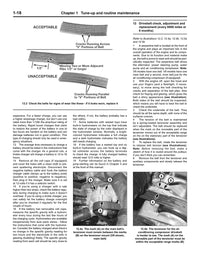All Haynes Digital Online Manuals are currently 50% off. They feature everything you love about our books in an instantly accessible digital online form, that you can use via any device with an internet connection.
This page is taken directly from our digital online manual 36059 for the 1997-2003 Ford F150 truck and 1997-2017 Ford Expedition/Lincoln Navigator, 2WD or 4WD with V6 or V8 gasoline engines, but it is similar to many other Ford, Mercury and Lincoln vehicles that use the Ford "modular motor" like the Mustang, Crown Victoria, Grand Marquis, and Town Car. For smooth running, lower pollution, and proper driveability, the PCV valve should be checked every 4 years or 60,000 miles, but the hose that connects to it should be checked at least once a year or every 15,000 miles. For additional information on the PCV system, refer to your Haynes manual Chapter 6.
Positive Crankcase Ventilation (PCV) Valve - check and replacement
Note: On 2010 and later models, the air intake resonator must be removed to access the PCV valve.
On some models the PCV valve is mounted to the intake manifold with two screws, with a hose connected to the valve cover (see video below). On others the valve is simply plugged into a grommet in the valve cover.
The PCV valve is located on the right side (2009 and earlier models and 2015 and later models) or the left side (2010 through 2014 models) valve cover.
Start the engine and allow it to idle, then pull the PCV valve from grommet in the valve cover and feel for vacuum at the end of the valve (see illustration). If vacuum is felt, the PCV valve/system is working properly.
Illustration 30.2 With the engine running at idle, remove the PCV valve and verify that vacuum can be felt at the end of the valve

- If no vacuum is felt, remove the valve and check for vacuum at the hose. If vacuum is present at the hose but not at the valve, replace the valve. If no vacuum is felt at the hose, check for a plugged or cracked hose between the PCV valve and the intake plenum.
- Check the rubber grommet in the valve cover for cracks and distortion. If it’s damaged, replace it.
- If the valve is clogged, the hose is also probably plugged. Remove the hose between the valve and the intake manifold and clean it with solvent.
- After cleaning the hose, inspect it for damage, wear and deterioration. Make sure it fits snugly on the fittings.
- If necessary, install a new PCV valve.


























